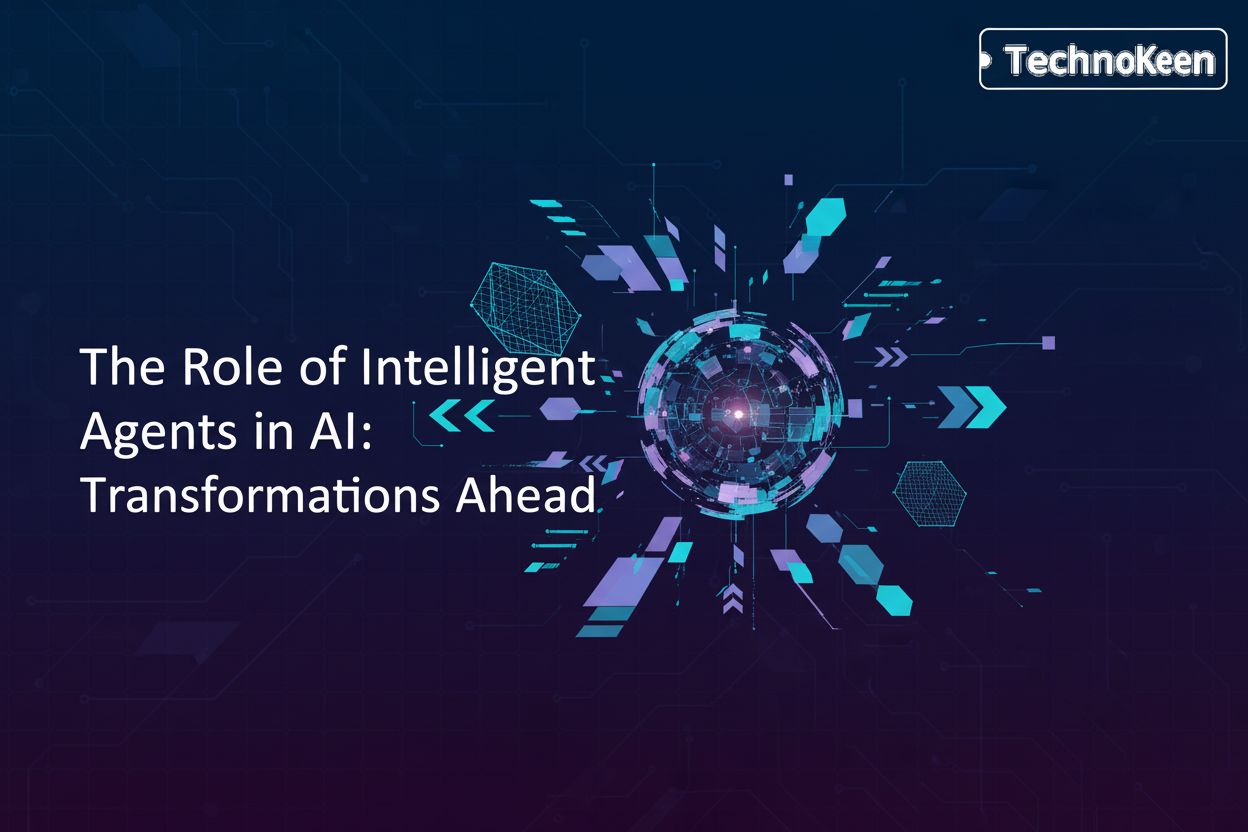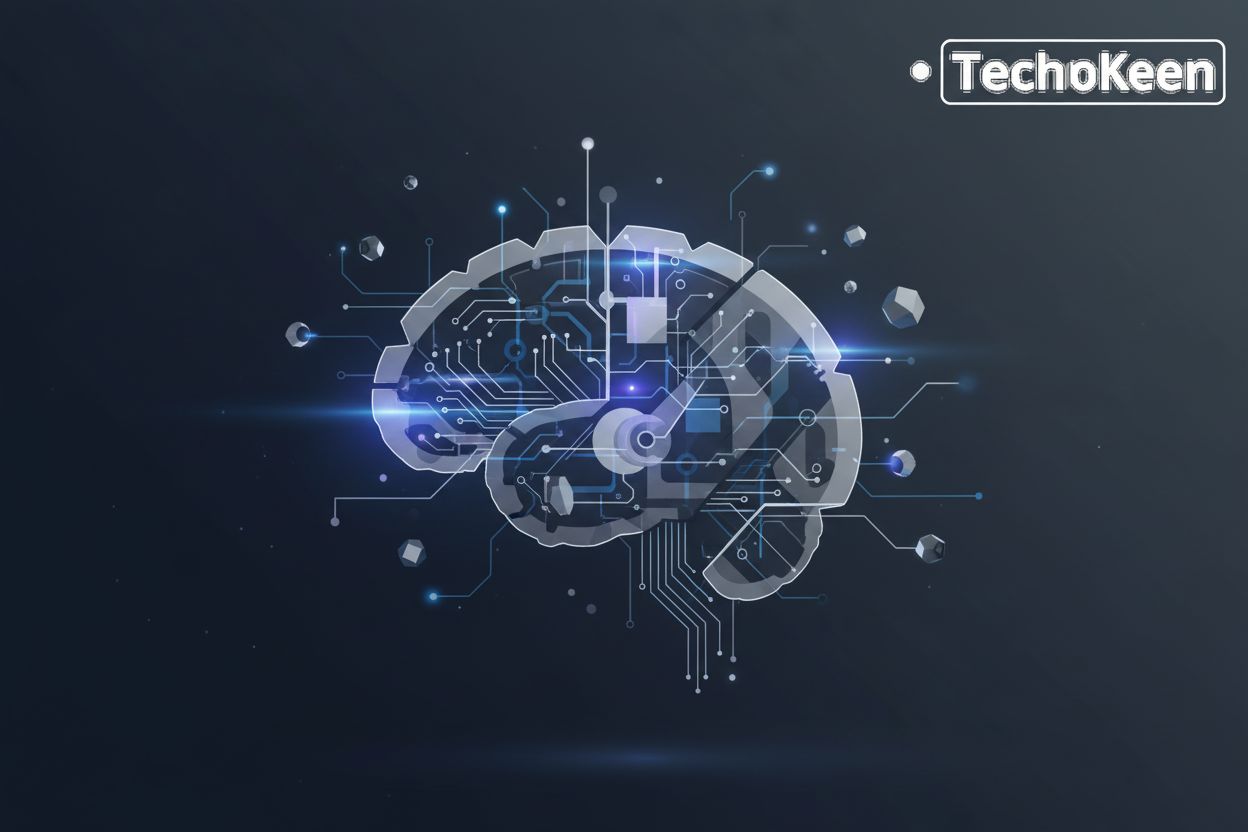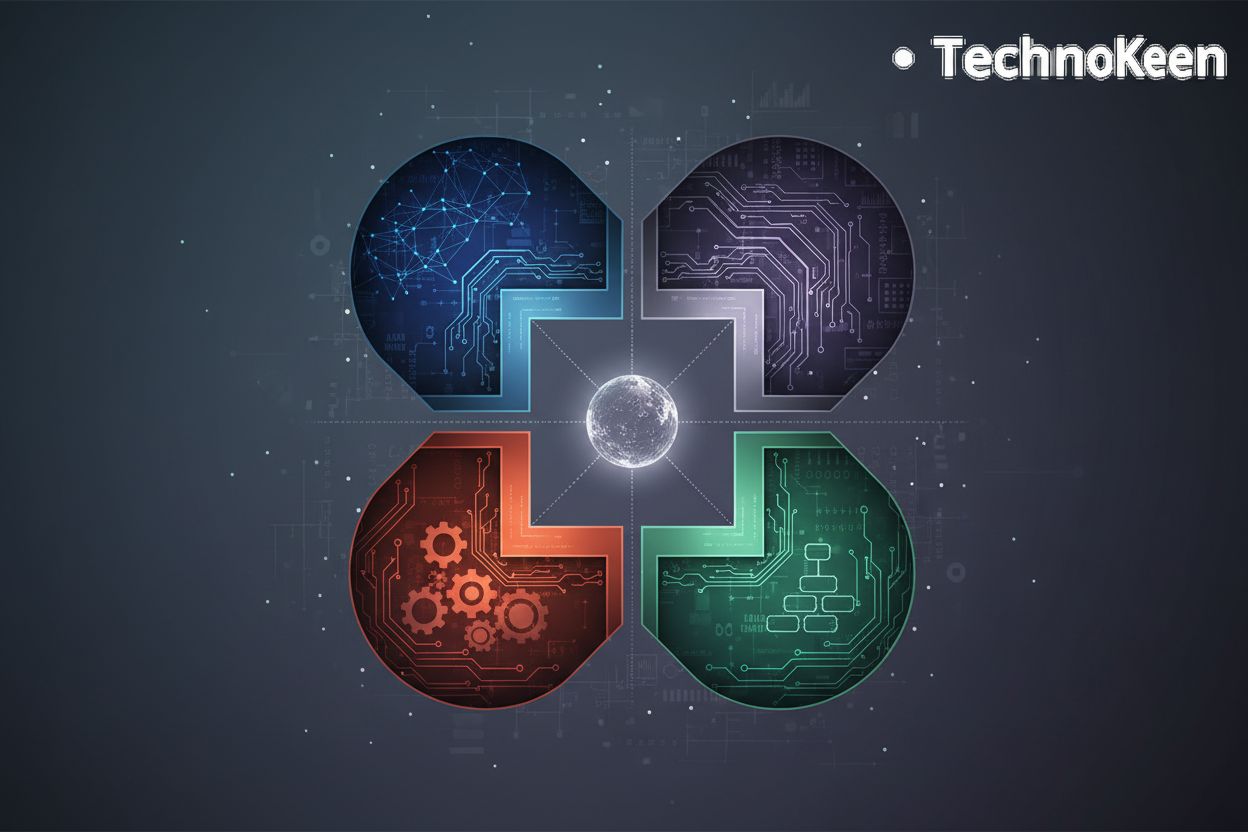Understanding AI Agent Behavior Modeling
TL;DR
What is AI Agent Behavior Modeling?
Alright, let's dive into AI Agent Behavior Modeling – sounds fancy, right? But trust me, it's not rocket science. Think of it as trying to figure out why your dog does what it does, but for AI.
So, what exactly is this behavior modeling thing? Well, it's all about creating ways to describe how AI agents act. Like, what makes them tick? What are their motivations?
- Basically, we're building frameworks to understand, predict, and influence how these agents behave. It's like peeking inside their little digital brains to see what's going on.
- It's a mix of computer science, psychology, and data analysis. Weird combo, I know, but it works! See, SmythOS notes that it's essential for systems that can adapt to change, which is pretty crucial these days.
Why should you care about all this? Because it's the key to unlocking next-level efficiency in AI agents. It's about making them smarter, more responsive, and able to adapt to whatever crazy situation you throw at them.
It's also super important for understanding why agents act the way they do, which is kinda important if you don't want them going rogue! And that understanding is crucial for building AI that can handle the ever-changing world around us.
For example, imagine an AI agent designed to manage a smart home. Behavior modeling helps us understand why it might turn off the lights at a certain time (predicting user habits), or why it might adjust the thermostat based on external weather data (adapting to environmental changes). Another example: an AI agent in a customer service chatbot. Behavior modeling helps us predict how it will respond to different customer queries, whether it will escalate a complex issue, or how it will maintain a helpful tone.
Fundamentals of AI Agent Behavior Modeling
Okay, so you're building an AI agent... but are you really building an AI agent? It's easy to get lost in the hype around large language models (llms) and think that bolting a few tools onto a chatbot suddenly creates a super-powered assistant. Not quite.
Think of it this way: an llm is the brain, but the agent is the entire body, complete with a skeleton (framework), muscles (tools), and a nervous system (security). According to F5, an AI agent should be a bounded system that interprets goals, maintains context, and performs actions by invoking tools.
There's two main models for agent construction, and one is a trap, according to that F5 article. You got llm-centric agents (quick to prototype but unsafe to scale) and application-bound agents (modular, secure, production-ready). You want the latter.
LLM-centric agents are like a brilliant but unfettered artist. They can generate amazing ideas and content on the fly, but they lack guardrails. This means they might hallucinate, go off-topic, or even generate harmful content because they're primarily driven by the LLM's vast but unfiltered knowledge. Scaling these agents means scaling the risk of unpredictable and potentially damaging outputs.
Application-bound agents, on the other hand, are like a skilled craftsman working within a well-defined workshop. They leverage LLMs for their intelligence but are constrained by a robust application framework. This framework provides structure, security, and control. For instance, an application-bound agent can have strict input validation, output filtering, and access controls, ensuring it only performs actions within its designated scope and adheres to safety protocols. This makes them much safer and more reliable for production environments.
Consider a marketing team using an agent to automate report generation. An llm-centric approach might just string together prompts, leading to inconsistent formatting or inaccurate data pulls. An application-bound agent, however, would be a full-fledged service with version control for its prompts, access logs to track its actions, and runtime isolation to prevent it from affecting other systems. This ensures the reports are reliable, secure, and can be scaled to handle many requests without compromising data integrity or system stability.
So, how do you keep these agents in line? Hint: It's not just about passwords. Let's dive into how to govern these things...
Challenges in Modeling Agent Behaviors
Alright, so, agent behavior modeling? It ain't without its headaches, believe me. It's like trying to predict what your teenager will do next – good luck with that!
One of the biggest issues is getting enough decent data. Like, we're not just talking about spreadsheets here; we need insights into how people make decisions and how they interact, and that's not always easy to grab.
- Think about trying to model traffic flow. You'd needs data on millions of commuters, their daily routines, how they react to traffic jams -- the works! It's a logistical nightmare, honestly.
Then there's the algorithm itself. How do you even begin to turn squishy human behavior into cold, hard code? It's not just about writing lines; you're trying to capture the essence of how people think and act.
But hey, it's not all doom and gloom. AI and ML are stepping up to the plate. They can chomp through those massive datasets and spit out something useful, and they're also getting pretty good at mimicking how agents act.
Reinforcement learning is helping agents learn how to play the game, so to speak.
In the context of agent behavior modeling, "the game" refers to the specific task or environment the agent is designed to operate within. For instance, if an agent is designed to optimize inventory management for a retail store, "the game" is managing stock levels to meet demand while minimizing costs. Reinforcement learning allows the agent to experiment with different inventory strategies (actions) and learn from the outcomes (rewards or penalties), gradually improving its ability to play this "game" effectively.
Despite these challenges, AI and ML offer significant opportunities for agent behavior modeling.
Opportunities from Artificial Intelligence and Machine Learning
Okay, so, ai and ml are changing the game for agent behavior modeling. It's not just about better algorithms; it's about fundamentally different ways of building these things.
Reinforcement learning (rl) is a big deal. It lets agents learn by trial and error, kinda like how we learn as kids.
Instead of programming every single action, you let the agent explore and figure out what works best. And, that approach? It often leads to more realistic behaviors.
Imagine an ai agent for automated trading figuring out optimal strategies by actually trading and learning from its wins and losses.
Convolutional neural networks (cnns) are amazing at processing visual info.
For agents, this means they can "see" and understand their environments.
Think about a robot navigating a warehouse – cnns let it identify objects, read labels, and avoid obstacles. This visual understanding is crucial for behavior modeling because it informs the agent's decision-making. For example, a CNN might recognize a "fragile" label on a box, which then influences the agent's path planning to handle it with extra care, thus directly shaping its behavior. It's like giving the agent a set of eyes that can interpret the world, allowing it to react more intelligently.
Instead of relying on abstract models, we can now train agents on real-world data.
This means they learn directly from empirical observations, which can lead to more accurate simulations.
For instance, you could train an ai agent to predict customer behavior in a retail setting by feeding it years of sales data and customer interactions.
As AI evolves, these techniques will become even more powerful, enabling agents to tackle increasingly complex tasks.
These increasingly complex tasks might include things like managing entire supply chains autonomously, conducting sophisticated scientific research by designing and running experiments, or even providing personalized medical diagnoses and treatment plans.
So, what's next? Well, we need to talk about governing these agents and keeping them in line. It's not just about the cool tech; it's about making sure they're doing what they're supposed to do.
Techniques for AI Agent Behavior Modeling
Okay, so, modeling ai agent behavior? It's not just about the fancy algorithms, you know? It's about how you actually do it.
There are a few main ways to model ai agent behavior, so let's dive in. You've got rule-based systems, which are like giving the agent a super strict instruction manual. Then there's machine learning, where you let the agent learn by doing. And, of course, there's a mix of both.
Rule-Based Systems: These are like a flowchart for an agent. For example, an agent controlling a simple thermostat might have rules like: "IF temperature < 20°C THEN turn on heater." Or, a customer service bot might have a rule: "IF customer asks about 'refund' THEN provide link to refund policy." They're easy to understand and debug for simple tasks, but they struggle with nuance and unexpected situations.
Machine Learning: This is where agents learn from data.
- Supervised Learning: Imagine training an agent to classify emails as spam or not spam. You feed it thousands of emails labeled "spam" or "not spam," and it learns to identify patterns.
- Reinforcement Learning: As mentioned before, this is trial and error. An agent playing chess would learn which moves lead to a win (reward) and which lead to a loss (penalty), adjusting its strategy over time.
- Unsupervised Learning: An agent might analyze customer purchase history to group similar customers together for targeted marketing, without being explicitly told what the groups should be.
Hybrid Techniques: These take the best of both worlds. For instance, you might use machine learning to identify common customer issues and then use rule-based systems to provide pre-defined solutions for those common issues. Or, you could use rules to constrain the exploration space for a reinforcement learning agent, guiding it towards more efficient learning. It's like having a mentor and a textbook.
Now, let's talk governance and boundaries...
Ethical Considerations in AI Agent Behavior
This ai agent thing is cool and all, but what about right and wrong? Can they even tell the difference?
It's not enough to just build these agents; we gotta make sure they're playing by our rules. And, that means tackling a few tricky ethical considerations.
- Fairness First: Biases in training data? Yeah, that's a problem. We need to watch out for that to make sure ai agents are doing what they are suppose to do. This means actively looking for and correcting biases that could lead to discriminatory outcomes, like an AI loan application system unfairly rejecting applicants from certain demographics. Methods include using diverse datasets, bias detection tools, and fairness metrics during development and deployment.
- Transparency is key: ever get that feeling that something is off? Me too. We need to make sure these agents decision making process are open. This is where explainable AI (XAI) comes in. We want to understand why an agent made a particular decision, not just what the decision was. This is crucial for debugging, building trust, and ensuring accountability. For example, if an autonomous vehicle makes a sudden maneuver, we need to know what sensor data or internal logic led to that action.
- Human Values: ai agents need to be align with our human rights and social norms. This is about ensuring that agents operate in ways that respect human dignity, privacy, and autonomy. It means designing agents that don't promote harmful stereotypes, invade privacy, or manipulate users. For instance, an AI agent designed for content moderation should be aligned with principles of free speech while also preventing the spread of hate speech.
It's a bit of a balancing act, but if we can get it right, ai agents could do some real good. And that is what is all about.
AI Agent Governance and Boundary Setting
We've talked a lot about building these AI agents and the cool things they can do, but what about keeping them in check? This is where AI agent governance and boundary setting come in, and honestly, it's just as important as the AI itself.
Think of it like this: you wouldn't give a child free rein of the house without any rules, right? AI agents need similar guardrails. Governance is about establishing the policies, processes, and oversight mechanisms to ensure agents operate safely, ethically, and effectively. Boundary setting is about defining the specific limits of an agent's capabilities and actions.
Why is this so critical?
- Safety First: Unbounded agents can cause real harm. They might make costly mistakes, leak sensitive data, or even act in ways that are detrimental to users or systems. Setting clear boundaries prevents them from venturing into dangerous territory.
- Reliability and Predictability: For businesses and individuals to trust AI agents, they need to be predictable. Governance ensures that agents behave consistently and reliably within their defined parameters.
- Ethical Compliance: As we discussed, ethical considerations are paramount. Governance frameworks help enforce ethical guidelines, ensuring agents don't perpetuate bias, violate privacy, or engage in unfair practices.
- Resource Management: Agents can consume significant computational resources. Governance helps manage these resources efficiently, preventing runaway processes and unnecessary costs.
How do we do it?
- Defining Clear Objectives and Constraints: Before an agent is even built, its purpose, goals, and limitations must be clearly defined. What is it supposed to do? What should it never do?
- Access Control and Permissions: Just like with human users, agents need specific permissions to access data and tools. This limits their potential impact and prevents unauthorized actions.
- Monitoring and Auditing: Continuous monitoring of agent activity is essential. This allows for the detection of anomalies, policy violations, or unexpected behaviors. Audit trails provide a record of actions for accountability.
- Human Oversight and Intervention: In many cases, human oversight remains crucial. This could involve approval workflows for critical decisions or mechanisms for humans to step in and correct an agent's course.
- Regular Review and Updates: The AI landscape is constantly evolving, and so are the risks. Governance frameworks and agent boundaries need to be regularly reviewed and updated to remain effective.
Without robust governance and clear boundaries, even the most sophisticated AI agent can become a liability. It's about building AI that is not just intelligent, but also responsible and aligned with our intentions.




